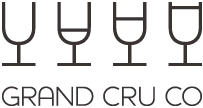Thieves use Paris catacombs to steal fine wine

Thieves knocked through a wall of the Paris catacombs to break into a luxury apartment’s cellar and steal an estimated 250,000 euros-worth of vintage wines, French media has reported police as saying.
There are an estimated six million people buried in the Paris catacombs, part of a vast underground tunnel network stretching for several miles underneath the French capital. French media said that the thieves stole around 300 bottles of fine wine from the cellar of an apartment in the plush sixth arrondissement of Paris, near to the Le Jardin du Luxembourg. No specific wines were named.
Paris police said that they were investigating how the theft took place. Police speculated that such precision in the catacombs network would require significant research and planning by the culprits. Earlier this summer, two teenagers were lost in the Paris catacombs for three days.
Only two kilometres of the network is open to the public. The gates are locked at night, yet groups are known to find ways into the tunnels to hold illicit parties. Parisians began burying their dead underground in the 18th Century in response to overflowing graveyards. Some of the estimated six million dead met their end at the guillotine during the French Revolution and subsequent Terror period at the end of 18th Century.
Italy faces ‘one of smallest wine harvests for 60 years’
Spring frost and an extreme heatwave nicknamed 'Lucifer' are set to leave the world's two largest wine producing countries with their smallest harvest for decades, according to initial estimates. Italy and France face historically low harvests in 2017, but there is optimism for quality
Italian wine body Assoenologi estimated that Italy would see one of its smallest wine harvests for 60 years in 2017, down by 25% on last year and coming in at 41.1 million hectolitres. That’s still equivalent to nearly 5.5 billion bottles. Its main rival at the top of the world wine production league, France, is facing its smallest wine harvest since 1945, according to France AgriMer, an agency that works with both the industry and government.
Devastating spring frosts, isolated hailstorms and a heatwave known as ‘Lucifer’ have combined to curtail the 2017 wine harvest size in several regions in those countries. In Italy, Tuscany, Sicily, Puglia, Umbria and Abbruzzo have fared worse overall in terms of yields, down by at least 30% versus last year, with things looking slightly more optimistic in northern Italy.
Piedmont, Veneto, Friuli were collectively predicted to see a harvest 15% smaller than 2016, according to Assoenologi. But, weather is not known for distributing its wrath evenly and a fuller picture will emerge in the next couple of months. For those with enough fruit, the better weather during flowering in several areas and the long, warm summer across much of Europe mean that there is much more optimism around quality.
‘So far, for all varieties, the grapes are smaller than usual, and the first harvested vineyards made highly concentrated juice that shows a lot of balance and qualities,’ said Stefano Gagliardo, of Barolo producer Gianni Gagliardo. ‘Of course, we need to have all grapes in the cellar before saying the last word. But so far it seems we’re going to have small amounts of opulent wines.’
In France, Bordeaux’s Right Bank and parts of the Loire and Alsace were expected to be among the hardest hit in terms of yields.
There are specific concerns for small-scale producers, and especially those already reeling from losing grapes to frost and hail in 2016. In southern Rhône, where picking for white appellation wines began on 21 August, regional wine body Inter Rhône said quality levels should outshine a ‘relatively modest’ crop – despite previously reported difficulties with poor fruit set, known as coulure, in some areas. The Northern Rhône harvest was due to begin on 4 September, two weeks ahead of schedule. Early harvests can be beneficial, because it gives growers more time to play with.
Winemakers will be watching the skies over the next few weeks as they monitor the ripeness of their grapes.
Chinese wine lovers snub screwcap, for now
Data compiled by research company Wine Intelligence for its Landscapes 2016 and 2017 reports shows that natural cork remains dominant in the US, China and Germany, where 60% of survey respondents chose it as their most favourite closure.
The research was based on surveys of 1,000 adults who are regular wine drinkers, conducted in 2016 and 2017. Of all cork preferring nations, China was most sceptical towards screwcap. Almost one in three of those surveyed said they did not like buying wine with this closure.
James Wainscott, author of the report, said that China’s preference for cork was partly due to the historical strength of wines from traditional French regions, such as Bordeaux and Burgundy. ‘Natural cork is almost a given and is certainly expected for wines from these regions,’ he said. ‘Our data shows that China in particular views screwcap appropriate only for lower quality wines.
‘The first wave of wine drinkers in China went straight for Bordeaux and Burgundy, where screwcaps are practically an aberration. As a result, they’re much more comfortable with natural cork: 61% of upper-middle class imported wine drinkers like buying wine with this closure, while only 23% accept screwcaps.’ Even New World producers accustomed to screwcap tend to change their closures for the Chinese market.
However, Wine Intelligence predicted that the situation may change in China. ‘We anticipate that perceptions of screwcap will begin to change with time, particularly as China is importing more and more wine from countries who routinely bottle under screwcap, such as Australia and Chile,’ the report said.
‘Old World countries have practised bottling under cork for generations and change will come slowly. But if Australia and New Zealand have taught us anything, it is that perceptions can be changed: it just takes time, effort and real ambassadors for change to lead the charge.’ According to Wine Intelligence, preference towards a closure is determined by exposure.
‘A whole generation of regular wine drinkers have been raised on screwcaps in Australia and as a result we see much greater levels of acceptance,’ said Wainscott. Meanwhile, in the UK cork and screwcap are equally preferred, 41% and 40% expressed affinity for them respectively, which has not changed since 2014. Wine Intelligence had also a look at synthetic cork globally.
This type of closure seems less polarising, with an average 60% of respondents displaying a neutral attitude towards it. The US and China are two countries where the preference for this closure is most dominant. China was the only market surveyed where synthetic closures were more popular than screwcaps.




